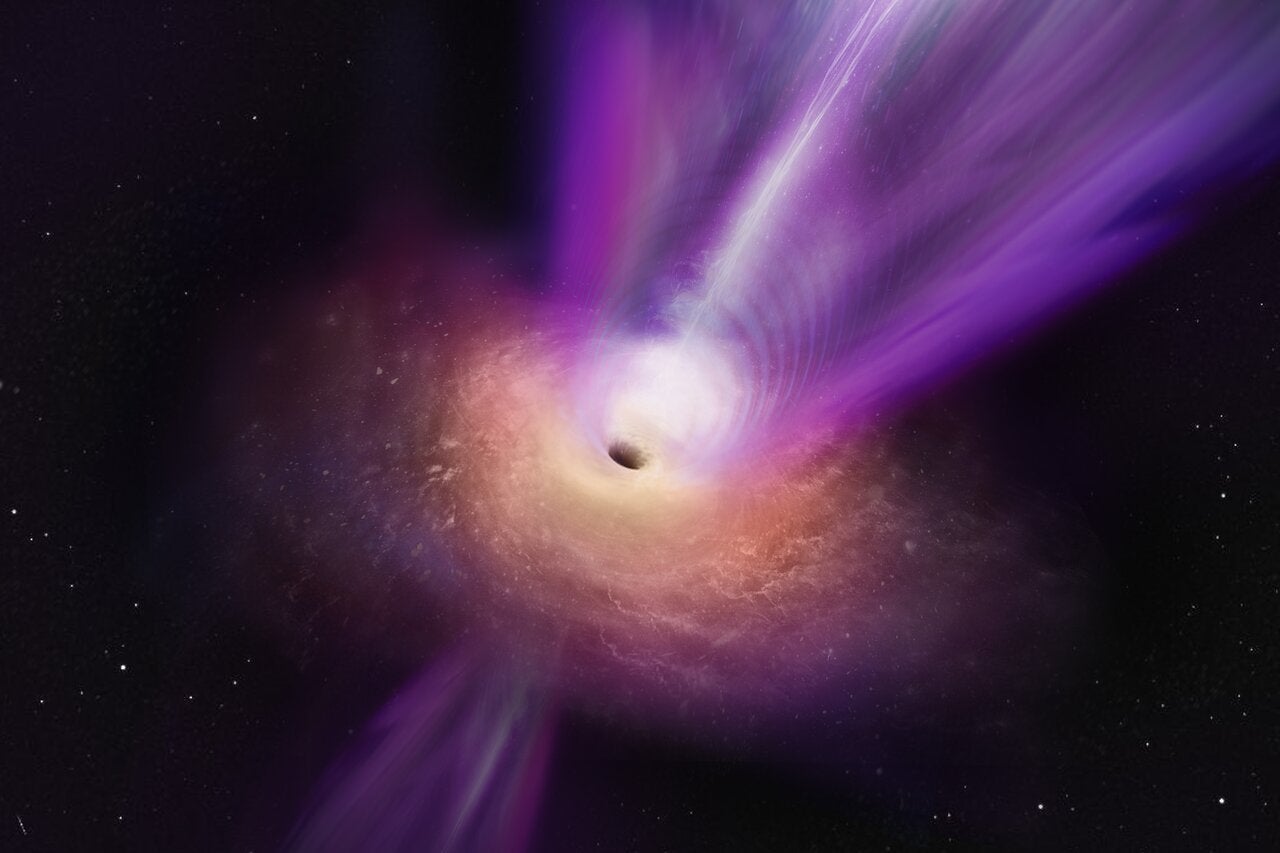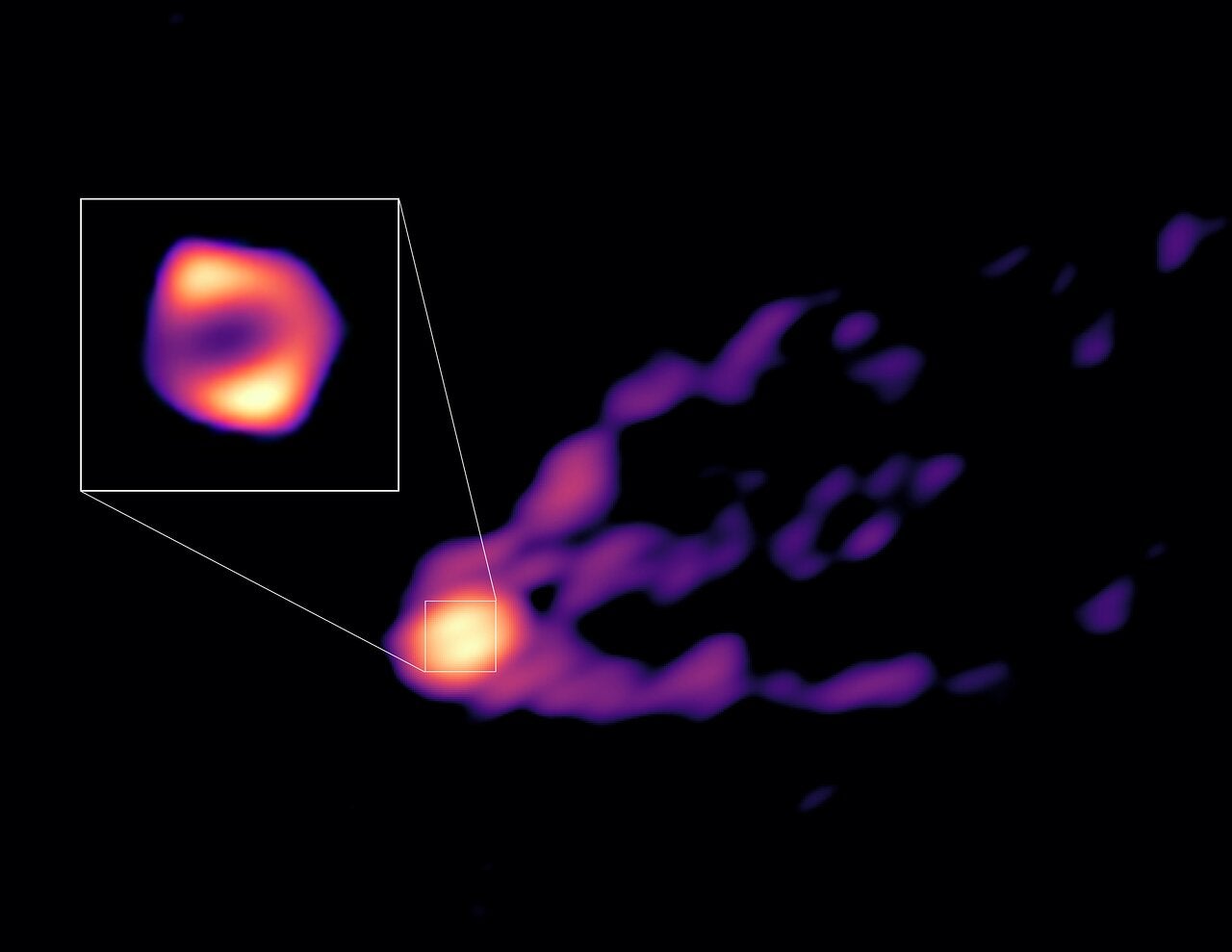Images show black hole spewing out ‘powerful’ jet for first ever time
Black holes are known for consuming matter – but they also shoot it out across the universe

New images show a powerful, high-speed jet spewing out of a black hole for the first ever time.
The breakthrough observations mark the first time scientists have seen that behaviour in one image, and the first picture of a black hole’s “shadow”.
Black holes are best known for their powerful ability to consume matter, and the density that means even light cannot escape their pull gives them their name. But they also shoot out material, sending out powerful jets of matter that can extend way beyond the galaxies that are their home.
The new image show exactly that happening, with the base of a jet connected to the swirling black hole that gave birth to it. Scientists hope that finally being able to see the process could allow them to understand how it happens, which remains largely mysterious.
The pictures show the same black hole that was the first ever to be pictured, in 2017: the object at the heart of the M87 galaxy, 55 million light years from Earth. But the new images are the result of a refocused view that gives a different image of the object and its behaviour.

The images were taken a year after those first observations by the Event Horizon Telescope or EHT, which were used for that first image. The ring appears 50 per cent larger than in those images, because the increased precision of the telescope allows scientists to see more of the hot plasma that surrounds the black hole.
Jae-Young Kim, from the Kyungpook National University in South Korea and the Max Planck Institute for Radio Astronomy in Germany, said: “This new image completes the picture by showing the region around the black hole and the jet at the same time.”
They were taken using the Global Millimetre VLBI Array (GMVA), the Atacama Large Millimeter/submillimeter Array (ALMA), and the Greenland Telescope (GLT).
The European Southern Observatory said the current image was obtained using radio light emitted at a longer wavelength, which made the jet visible.
Thomas Krichbaum, of the Max Planck Institute for Radio Astronomy, said: “At this wavelength, we can see how the jet emerges from the ring of emission around the central supermassive black hole.”
The researchers said they will continue to investigate how supermassive black holes emit powerful jets - one of the galaxy’s most mysterious features.
Eduardo Ros, from the Max Planck Institute for Radio Astronomy, said: “We plan to observe the region around the black hole at the centre of M87 at different radio wavelengths to further study the emission of the jet.
“Such simultaneous observations would allow the team to disentangle the complicated processes that happen near the supermassive black hole.
“The coming years will be exciting, as we will be able to learn more about what happens near one of the most mysterious regions in the Universe.”
The observations are described in the journal Nature.
Additional reporting by agencies
Join our commenting forum
Join thought-provoking conversations, follow other Independent readers and see their replies
Comments